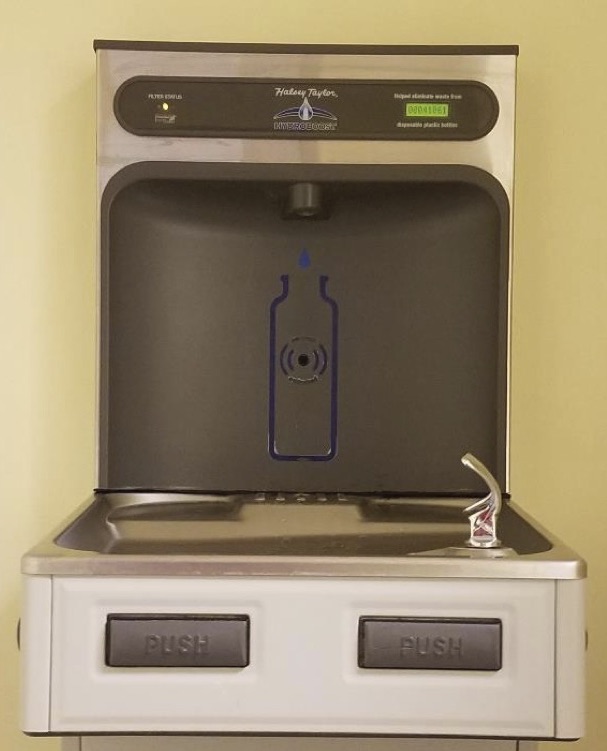By Kate Pound, MGWA President
I am reasonably sure that as earth science and groundwater professionals all of us put a lot of stock in data or facts. They are the basis on which we build our interpretations of any scenario and form the foundation for how we plan to manage or use surface and groundwater. I did a google search for ‘quotes about data or facts’ because I wanted to find a classic quote – but I ended up finding thousands of quotes and spent far too much time reading them and trying to decide which ones were most appropriate. I’m suggesting that you do the same search – it makes for some reflective browsing and maybe some good dinner-table talk. Why am I homing in on data and facts? I recently had a family member visiting from California. We stopped to fill up our water bottles at one of those water-bottle filling stations.

She was fascinated because the water-bottle filling station had a counter that measured how many plastic water bottles had been saved because of people using the station. I asked why that was novel – and she explained that all the filling stations she is familiar with in California measure the amount of water saved. A google search shows that their use is primarily directed towards reducing the waste , although they also play a role in reducing the potential for lead poisoning in schools – and in reducing the amount of water wasted at ‘standard’ drinking fountains.
Before we learned about the comparison between water used at standard drinking fountains vs. water-bottle filling stations we had a healthy discussion of what the ‘water saved’ metric really means – how is it calculated? Is it really ‘saving’ water? At Thanksgiving the college-age daughter of family friends rather sheepishly told me that the last time she used a filling station it was at 49,999 bottles saved. She filled her bottle up- and it did not turn over to 50,000 – so she looked around, nobody was there, and she surreptitiously tipped some water out so she could refill and see it turn over to 50,000 (I did not ask her why she didn’t drink the water).
While all this is interesting it really leads to my conclusion that while we may have facts or data, what ends up being key to how we use facts or data is our perspective. Before I learned about the ‘water savings’ information being based on a comparison between standard drinking fountains and filling stations I had decided in my mind that this difference in metrics used was because Californians value water more than we currently do in Minnesota – that we take fresh drinking water for granted, and this perspective leads us to be more concerned about eliminating plastic waste. While this hypothesis may or may not be correct (what do the data say?), I still place high value on data and facts – even though I could not find a single online image of a water filling station that showed measurement of water saved (maybe my cousin got her facts wrong?). That said, I’ll take my water bottle with me to AGU in San Francisco next week – and look for water bottle filling stations. I raise a glass (of water) to all of you, feeling somewhat relieved that this is my last presidential letter, and thanking you for your support of MGWA – it has been fun and a privilege to serve as MGWA President.